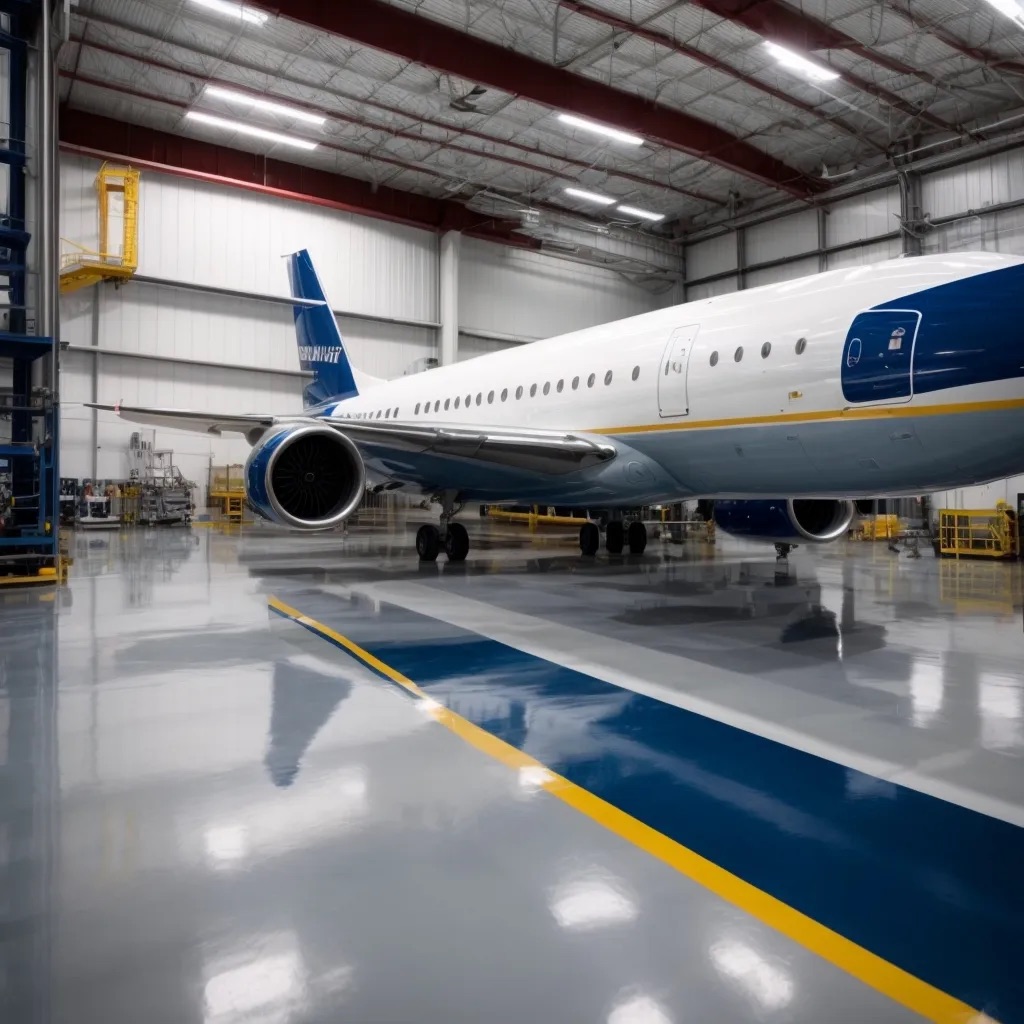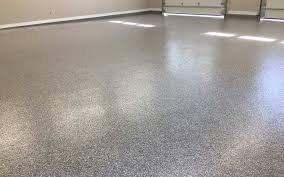Safe & Durable Hangar Floors Your Aircraft Deserve

Importance of Hangar Floor Durability
Ensuring the durability of hangar floors is critical for maintaining a safe and functional aviation environment. Aircraft maintenance activities, such as engine repairs, fuel system checks, and structural inspections, necessitate a robust flooring system that can withstand the weight and impact of various aircraft. Safety standards mandate that hangar floors must be able to endure heavy loads, resist chemical spills, and provide a non-slip surface to prevent accidents during operations.
When conducting aircraft maintenance, the hangar floor must support the weight of the aircraft, equipment, and personnel without deteriorating. A durable floor prevents cracks, uneven surfaces, or deterioration that could pose safety risks. Safety standards emphasize the importance of regular inspections and maintenance to ensure that the hangar floor remains structurally sound and safe for use.
Moreover, the durability of hangar floors directly impacts the efficiency of aircraft maintenance operations. A sturdy floor reduces downtime due to repairs or replacements, allowing for smoother workflow and timely completion of tasks. By adhering to safety standards and investing in high-quality flooring materials, you can create a secure environment that enhances both operational efficiency and overall safety within the aviation facility.
Factors Affecting Hangar Floor Safety
To maintain optimal safety in hangar operations, understanding the key factors that influence hangar floor safety is imperative. Two critical factors that significantly impact hangar floor safety are slip resistance and surface coatings. Slip resistance refers to the ability of the floor surface to provide traction and prevent slips and falls, especially in areas where there may be oil, water, or other fluids present. Hangar floors should have a high coefficient of friction to ensure adequate slip resistance. Surface coatings play a vital role in enhancing hangar floor safety by providing a protective barrier against wear and tear, chemicals, and other potential hazards.
When it comes to slip resistance, factors such as the texture of the floor, the presence of additives like grit, and the type of flooring material used all play a role in determining how slip-resistant the floor is. Additionally, regular maintenance and cleaning procedures are essential to preserving the slip resistance of the floor over time.
Surface coatings, such as epoxy or polyurethane finishes, not only enhance the durability of the hangar floor but also improve safety by creating a smooth, easy-to-clean surface that reduces the risk of slips and falls. These coatings can also be customized with additives to further enhance slip resistance in areas where it is needed most. By prioritizing slip resistance and investing in quality surface coatings, you can ensure that your hangar floor meets the highest safety standards for aircraft operations.
Choosing the Right Flooring Material
Selecting the appropriate flooring material is crucial in ensuring the safety and durability of hangar floors. When it comes to material selection, there are several key factors to consider to ensure the longevity and reliability of the flooring in your aircraft hangar. Safety features play a vital role in the decision-making process.
Concrete is a popular choice for hangar floors due to its durability and strength. It is resistant to heavy loads and provides a stable surface for aircraft movement. Additionally, concrete floors can be sealed to enhance their resistance to chemicals, oil, and other substances commonly found in hangar environments.
Another option to consider is epoxy flooring. Epoxy coatings offer excellent chemical resistance, are easy to clean, and provide a high-gloss finish that can enhance visibility in the hangar. These coatings also come in various colors, allowing for customization based on your preferences.
For areas where slip resistance is a primary concern, rubber flooring tiles can be a suitable choice. These tiles offer excellent traction, reducing the risk of slips and falls in the hangar. They are also durable and easy to maintain, making them a practical option for high-traffic areas.
Installation Considerations for Hangar Floors
Consider the following factors when planning the installation of hangar floors to ensure optimal performance and longevity. Installation challenges can arise due to the size and weight of aircraft, as well as the need to comply with safety regulations. When installing hangar floors, it is crucial to consider the load-bearing capacity of the flooring material. Aircraft can exert significant pressure on the floor, so it is essential to choose a material that can withstand these loads without cracking or deteriorating.
Safety regulations must also be adhered to during the installation process. The floor should meet industry standards for slip resistance to prevent accidents and injuries. Additionally, proper drainage systems should be installed to prevent water accumulation, which can create slippery conditions and damage the floor over time.
During installation, attention should be paid to the flatness and levelness of the floor. Uneven surfaces can cause issues with the movement of aircraft and may lead to premature wear and tear. Proper surface preparation is essential to ensure a smooth and durable finish.
Lastly, consider the timeframe for installation and factor in any potential disruptions to hangar operations. Planning ahead can help minimize downtime and ensure a seamless installation process that meets both safety requirements and operational needs.
Maintenance Tips for Long-lasting Floors
When maintaining hangar floors for longevity, prioritize regular inspections and proactive care to prevent deterioration and ensure safety standards are consistently met. Regular inspections involve checking for any signs of wear, such as cracks or uneven surfaces, which could potentially lead to safety hazards for aircraft and personnel. Implementing a proactive care routine is essential for the upkeep of hangar floors.
Cleaning techniques play a crucial role in preserving hangar floors. Use a mild detergent or specialized hangar floor cleaner to remove any dirt, oil, or grease buildup. Regular sweeping and mopping can help prevent these substances from causing damage to the flooring material over time. Additionally, consider using a pressure washer for thorough cleaning, especially in high-traffic areas.
Sealing options are vital for protecting hangar floors from moisture, chemicals, and other corrosive substances. Epoxy coatings or sealants can provide a protective barrier that enhances the durability of the flooring material. Ensure that the sealant is applied according to manufacturer guidelines for optimal effectiveness. Regularly inspect the sealant for any signs of wear and reapply as needed to maintain its protective properties.
Enhancing Aircraft Protection With Quality Flooring
To enhance aircraft protection effectively, prioritize investing in high-quality flooring solutions tailored to withstand the demands of hangar operations. Quality flooring is essential for ensuring the safety and longevity of your aircraft. Choosing durable materials such as epoxy coatings or polished concrete can significantly reduce the risk of damage from heavy equipment, chemicals, or fuel spills commonly found in hangar environments.
Investing in quality flooring not only enhances aircraft safety but also contributes to the overall efficiency of your operations. By providing a smooth, level surface, the risk of tripping hazards or equipment damage is minimized. Additionally, quality flooring can improve the cleanliness of your hangar, making maintenance easier and more effective.
Regular flooring maintenance is crucial to preserving its protective qualities. Implementing a routine cleaning schedule and promptly addressing any spills or damages can extend the lifespan of your flooring and ensure continued aircraft safety. Inspecting the flooring for signs of wear and tear, such as cracks or uneven surfaces, is essential to prevent accidents and maintain a secure environment for both your aircraft and personnel.

Why Epoxy Flooring is Perfect for Phoenix: Benefits, Options, and Installation Tips
Phoenix, Arizona, is known for its scorching summers and intense heat. Such extreme temperatures can wreak havoc on many types of flooring. That’s why epoxy flooring has emerged as the go-to option for homes and businesses in this sun-baked region. Offering...

Choosing the Best Epoxy Garage Floor Coating for Hot Climates: A Complete Guide
Epoxy garage floor coatings are renowned for their durability, versatility, and aesthetic appeal. However, when it comes to hot climates, the choice of epoxy flooring becomes even more crucial. High temperatures can affect the performance of floor coatings, so...

Everything You Need to Know About Epoxy Flooring for Garages: Options, Coatings, and Benefits
When it comes to transforming your garage into a functional and aesthetically pleasing space, few solutions are as effective as epoxy flooring. Offering a blend of durability, versatility, and style, epoxy coatings are becoming the go-to choice for homeowners looking...

The Ultimate Guide to Driveway Coating: Costs and Top Options for 2025
In 2025, homeowners are more discerning than ever when it comes to enhancing the curb appeal and longevity of their properties. One of the most effective ways to achieve this is through driveway coating. Whether you’re looking to protect your driveway from the...

Finding the Best Commercial Epoxy Flooring in Mesa, Arizona: Costs, Options, and Benefits
Epoxy flooring has become a top choice for commercial properties across the United States, especially in cities like Mesa, Arizona. Known for its durability, aesthetic appeal, and low maintenance, commercial-grade epoxy flooring is an ideal solution for businesses...
